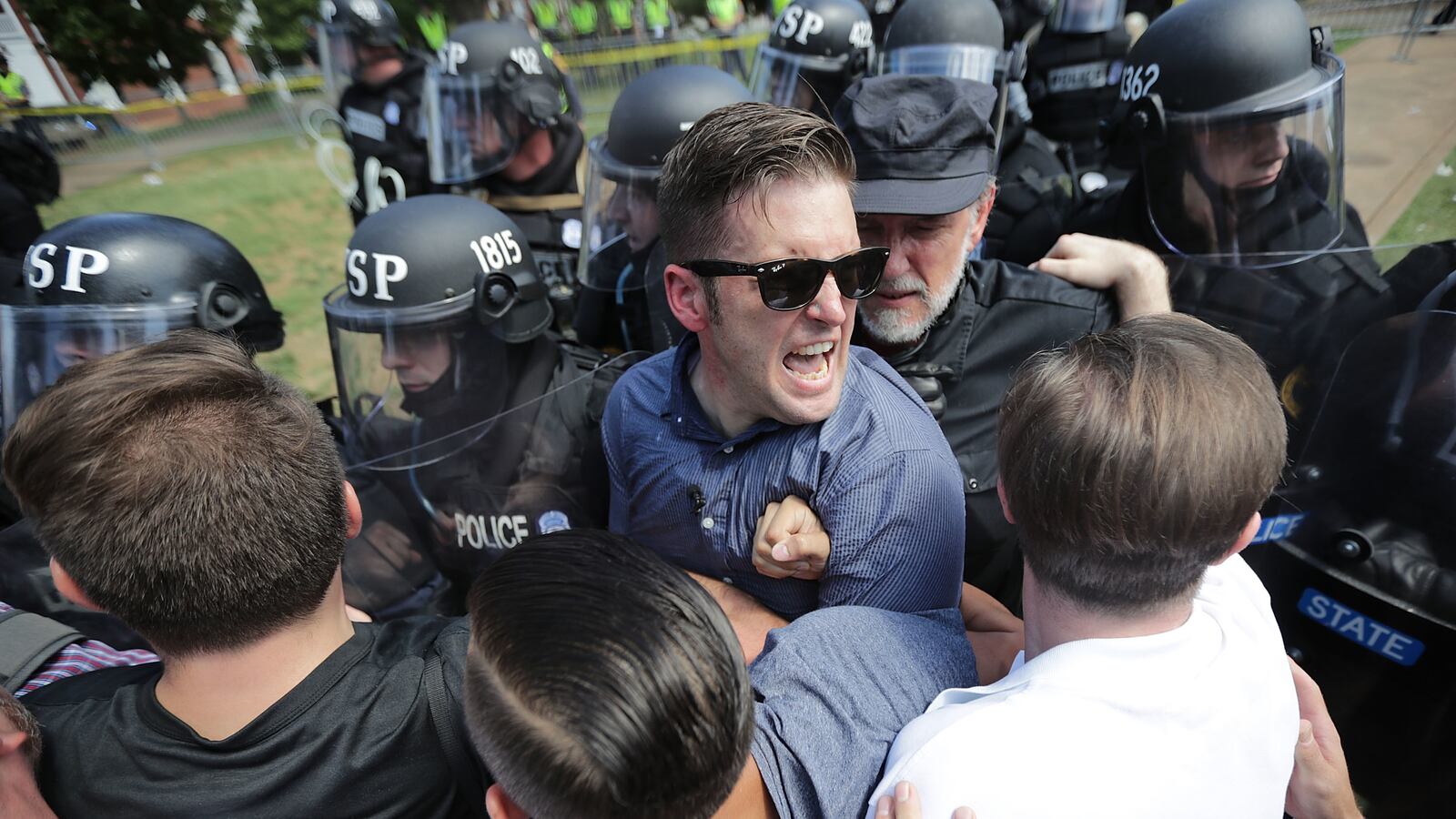AUSTIN, Texas—The new documentary Alt-Right: Age of Rage, which premiered at SXSW, opens on an unsettling scene: 20,000 American Nazis holding a rally at New York City’s Madison Square Garden.
Held by the German-American Bund, an organization of American-born Nazi sympathizers, the event occurred on Feb. 20, 1939, where these tailored traitors denounced Jews, President Roosevelt, and the “Jewish-controlled” media. It managed to attract widespread media attention not for its ugly messaging but violent clashes in the streets, as well as an incident of stormtrooper cosplayers severely beating and stripping a Jewish protester onstage.
“We, with American ideals, demand that our government shall be returned to the American people who founded it,” proclaimed Fritz Kuhn, leader of the Bund.
If that sort of rhetoric sounds awfully familiar, it should, as it echoed that of the white nationalist America First Committee (AFC), whose motto has been co-opted by President Donald Trump.
Age of Rage draws parallels between the Nazis’ night at the Garden and the alt-right march on Charlottesville, that saw Ku Klux Klansmen, neo-Nazis, neo-Confederates, and white power militias banding together to unify in the name of hate. The white nationalist rally was organized by Jason Kessler, former contributor to the far-right publication The Daily Caller, and onetime KKK Grand Wizard David Duke and white supremacist Richard Spencer gave speeches. It eventually ended in tragedy when a white nationalist drove his car into a crowd of counterprotesters, killing anti-racist activist Heather Heyer.
In the wake of the tragedy, the camera trains on Spencer, who characterizes the rally as a “win” for the alt-right, saying, “It does feel like a win, because we demonstrated our resolve.”
Spencer is one of the main characters of director Adam Bhala Lough’s documentary; his counterpoint is Daryle Lamont Jenkins, an antifa activist who runs the One People’s Project, an organization that specializes in unmasking racists.
“He’s dedicated his life to hating people, basically,” Spencer says of Jenkins, well-aware of the irony. It’s a truly comical sentiment coming from a man who’s called for “black genocide” and repeatedly campaigns for the creation of a “white ethnostate,” or “a safe haven for whites around the world”—in other words, a literal safe space.
An academic who once claimed to have been mentored by Trump senior policy adviser Stephen Miller, Spencer garnered national headlines for a Washington, D.C., event celebrating the presidential election of Donald Trump, wherein he quoted Nazi literature, cried out “Hail Trump!,” and was met with Nazi salutes and sieg heil chants from the crowd. The film ever so briefly explores Spencer’s history as a rotund student of Shakespeare and Nietzsche (because of course) who once voted for John Kerry, but fails to examine how and when he was radicalized.
Like many white nationalists, Spencer felt emboldened by the election of Donald Trump, calling it a “victory of will” (a nod to Leni Riefenstahl’s Nazi propaganda film Triumph of the Will). As white nationalist Jared Taylor, the “godfather of the alt-right”—and a man with some pretty jacked-up teeth—explains, “Donald Trump did appeal to a certain incipient racial consciousness among the electorate. He wanted to build a wall, he wanted to throw out all illegals, and he wanted to take a very, very hard look at Muslim immigration. Those people are incipiently racially conscious, because all of those policies, they will slow the dispossession of whites; they will slow the reduction of whites to a minority. This is an important appeal to a certain number of Americans. I don’t know how many.”

In its commitment to objectivity, presenting Spencer and Jenkins as two sides of a coin, Lough’s film falls victim to false balance. Spencer’s views remain relatively unchallenged throughout the film, so one wonders whether he should have been granted this platform to begin with. Thank goodness for Mark Potok of the Southern Poverty Law Center, who offers the most insightful commentary in the film, calling the alt-right “a rebranding of white supremacy for public-relations purposes,” arguing that the notion of there being “equivalency” between the radical right and the radical left in the U.S. is “ridiculous,” and illustrating how “for these four years, white nationalists really feel like they have their man in the White House” in Trump.
Potok also addresses the debate between “quarantine” and “inoculation,” or the idea that the vile hatemongers among us should either be ignored or examined. He concludes that today, with our various modes of communication, quarantine is “totally impossible as a practical manner.” I’m not quite as convinced that’s the case, and as Lough’s film begins focusing more on Spencer than Jenkins, you can see why.
White nationalists like Spencer, Taylor, and others were given a considerable shot in the arm when, following their march on Charlottesville, President Trump took it upon himself to condemn the counterprotesters and maintained that there was “blame on both sides”—not once, but twice. And Lough’s film includes some impressive—and very disturbing—behind-the-scenes footage of the march on Charlottesville, including chats between Duke and Spencer (complaining about Jews, naturally) and shots of Spencer crying like a little boy with a skinned knee as he’s chauffeured out of the fracas.
When asked about the string of terrorist attacks carried out by white nationalists, an ever-growing list that now includes Parkland shooter Nikolas Cruz, Spencer confesses that the “alt-right” movement tends to attract the mentally infirm.
“I think it means something in the sense that the alt-right is getting at that fissure, you know? It’s getting at the really taboo issues, it’s getting at the most difficult aspects of society, and so that might attract people who are ill in some way,” Spencer says.
Lough’s film, however, ends on a message of hope—courtesy of the underutilized Jenkins, who keeps on fighting for justice in the face of pancreatic cancer.
“We’re not divided the way people may think we are,” he says. “We’re frustrated, we want questions answered, but we’re not divided.”






